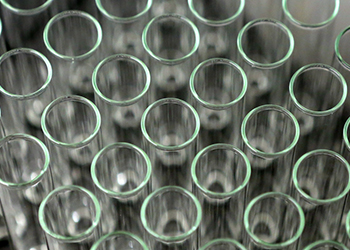Transition metal complexes with d4-d7 electron configurations have the capability of exhibiting two spin states (high spin or low spin) depending on the strength of the ligand field. Strong field ligands tend to favor electron pairing, giving low spin complexes while weak field ligands give rise to high spin complexes with the maximum number of unpaired electrons. Spin crossover (SCO) compounds are special cases where the transition metal complexes have ligands or ligand combinations of intermediate field strength. In such cases, the high or low spin states are in equilibrium and it is possible to access either the high or low spin state depending on external perturbations such as light, heat, or pressure. The change in spin state is accompanied by changes in magnetic moment, color and molecular geometry. The picture to the right shows an example of the thermochromic behavior of an iron(II) SCO compound on warming from 90K to 273K (left to right); it is easy to see why researchers have been fascinated by this sort of compound since their discovery in the 1960’s. The reversible change in magnetic moment and color upon heating, on application of pressure, or upon laser stimulation, holds promise for the use of such materials in different sensing applications. In order to realize such applications several issues need to be addressed, which are the focal points of our and of other’s research interest around the world. First, can we learn to control the spin crossover behavior (temperature/pressure range) for custom designing future thermochromic or pressure-sensing materials? Secondly, how can we make these SCO materials robust enough for practical sensing applications? Often, but not always, the SCO compounds are susceptible to crystal fracture (via desolvation or stress) which can subsequently change the SCO properties of the material. An example of such a decomposition is shown on the right for a different iron(II) SCO compound going through one heating and cooling cycle; we can show that the magnetic properties of the virgin material are different than the aged sample in many cases- this is clearly not very desirable for incorporation into a reliable device. One example of a strategy we have used is to make robust and potentially useful SCO materials is to incorporate them into polymer matrices, as in Figure 3.


Figure 3








